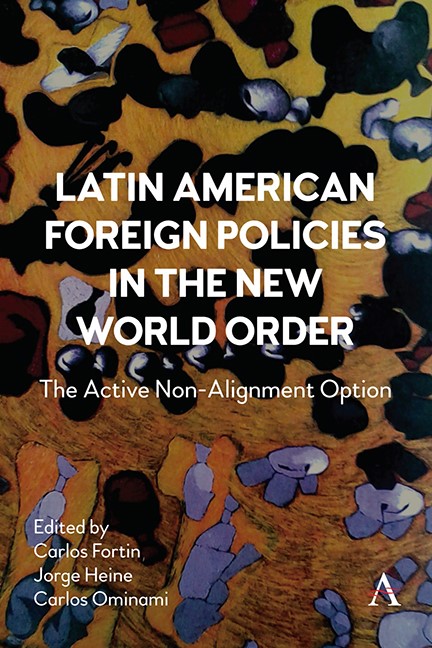Book contents
- Frontmatter
- Dedication
- Contents
- List of Tables and Figures
- Foreword
- Introduction: Active Non-Alignment (ANA) A Doctrine
- Part One The Emerging World Order
- Part Two Active Non-Alignment In The New Geopolitical Environment
- Part Three Active Non-Alignment in the New International Political Economy
- Part Four National Perspectives
- Conclusions—Implications of an Active Non-Alignment (ANA)
- Notes on Contributors
- Index
Chapter Eight - From the Non-Aligned Movement to Active Non-Alignment: History and Lessons
Published online by Cambridge University Press: 15 November 2023
- Frontmatter
- Dedication
- Contents
- List of Tables and Figures
- Foreword
- Introduction: Active Non-Alignment (ANA) A Doctrine
- Part One The Emerging World Order
- Part Two Active Non-Alignment In The New Geopolitical Environment
- Part Three Active Non-Alignment in the New International Political Economy
- Part Four National Perspectives
- Conclusions—Implications of an Active Non-Alignment (ANA)
- Notes on Contributors
- Index
Summary
The world that emerged after World War II had a large part of what is now the Global South in colonial condition. Suffice it to say that the United Nations (UN) was created by convening in January 1942 a conference of 26 nations to reaffirm the commitment to fight against the Axis (Germany, Italy, and Japan) until the very end.
The allied countries (the United States, the Soviet Union [Union of Soviet Socialist Republics; USSR], the United Kingdom, and China) met from August to October in 1944 in Dumbarton Oaks to prepare the statutes and the design of the future UN. The organization was born at the San Francisco Conference in 1945, with 50 participating countries, which approved the Charter of the UN. The organization formally came into being on October 24, 1945, after France, the United States, the United Kingdom, the Soviet Union, and China ratified the treaty. Only the victors of World War II were founding members. And the Big Five retained veto power, as so-called super victors. Asia had only two participating countries—China and India, which would actually win their independence on August 15, 1947—and Africa had two as well—South Africa and Ethiopia. On the other hand, Latin America had 19 countries among the founding members, allies of the United States and considered winners of the war.
Latin America gained its independence at the beginning of the nineteenth century. But almost all of Africa and Asia had been left out of the creation of the UN. The colonies had formed military units for the armies of the motherlands, whose men, after the conflict, were once again second-class citizens. In the colonies, all positions of power in the economy, in education, in health, and in administration were occupied by white men who came from the colonial powers.
But a new feeling was emerging among the national elites, many of whom had had access to higher education, often in the metropolis: a growing sense of dignity, frustration, and injustice. Colonialism did not invest in education, especially in higher education. When Libya obtained independence from Italy, the total number of people with university studies was 28 men and no women.
- Type
- Chapter
- Information
- Latin American Foreign Policies in the New World OrderThe Active Non-Alignment Option, pp. 113 - 122Publisher: Anthem PressPrint publication year: 2023



